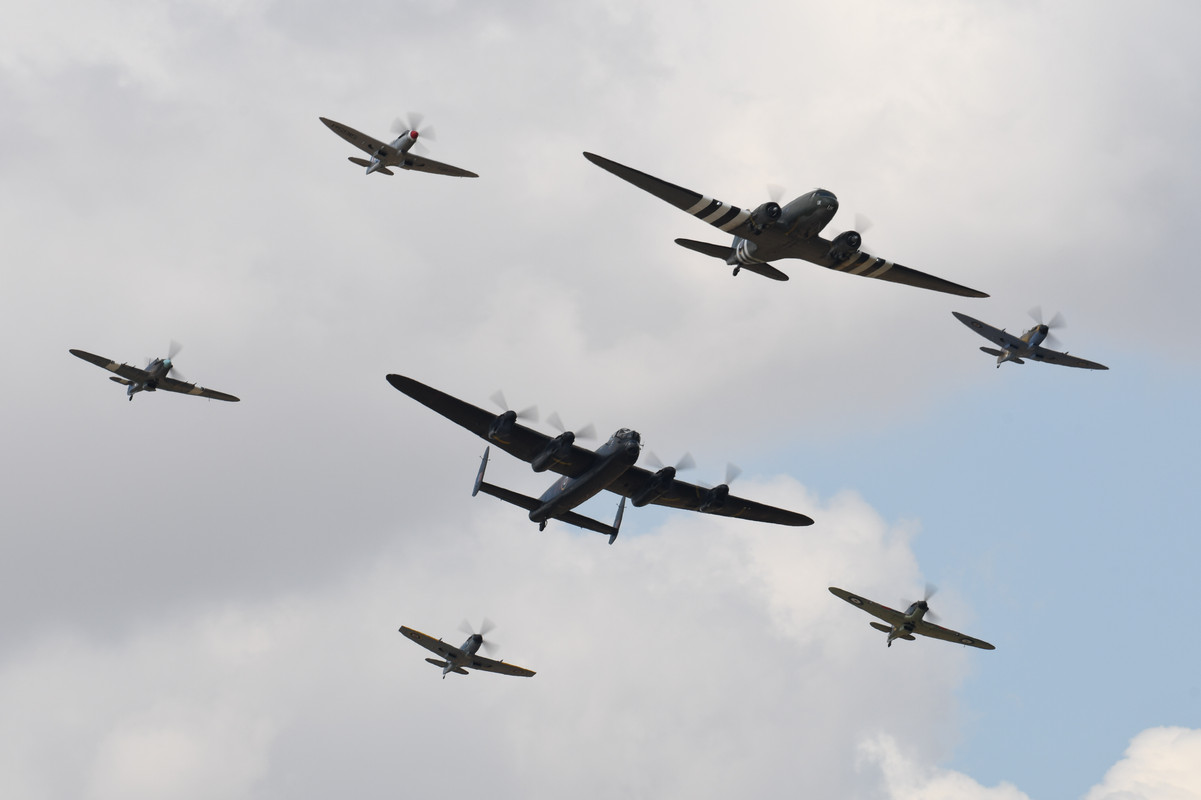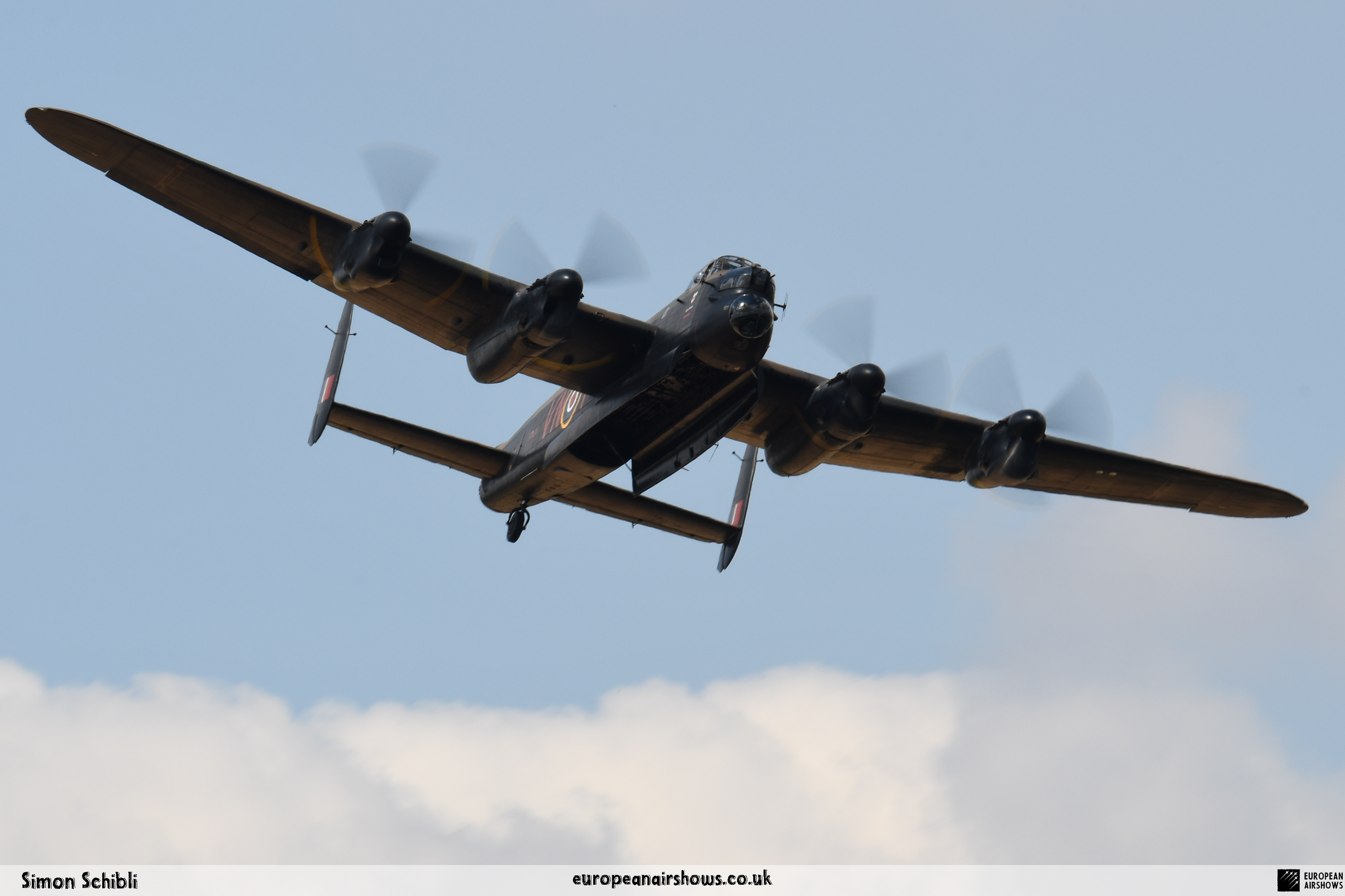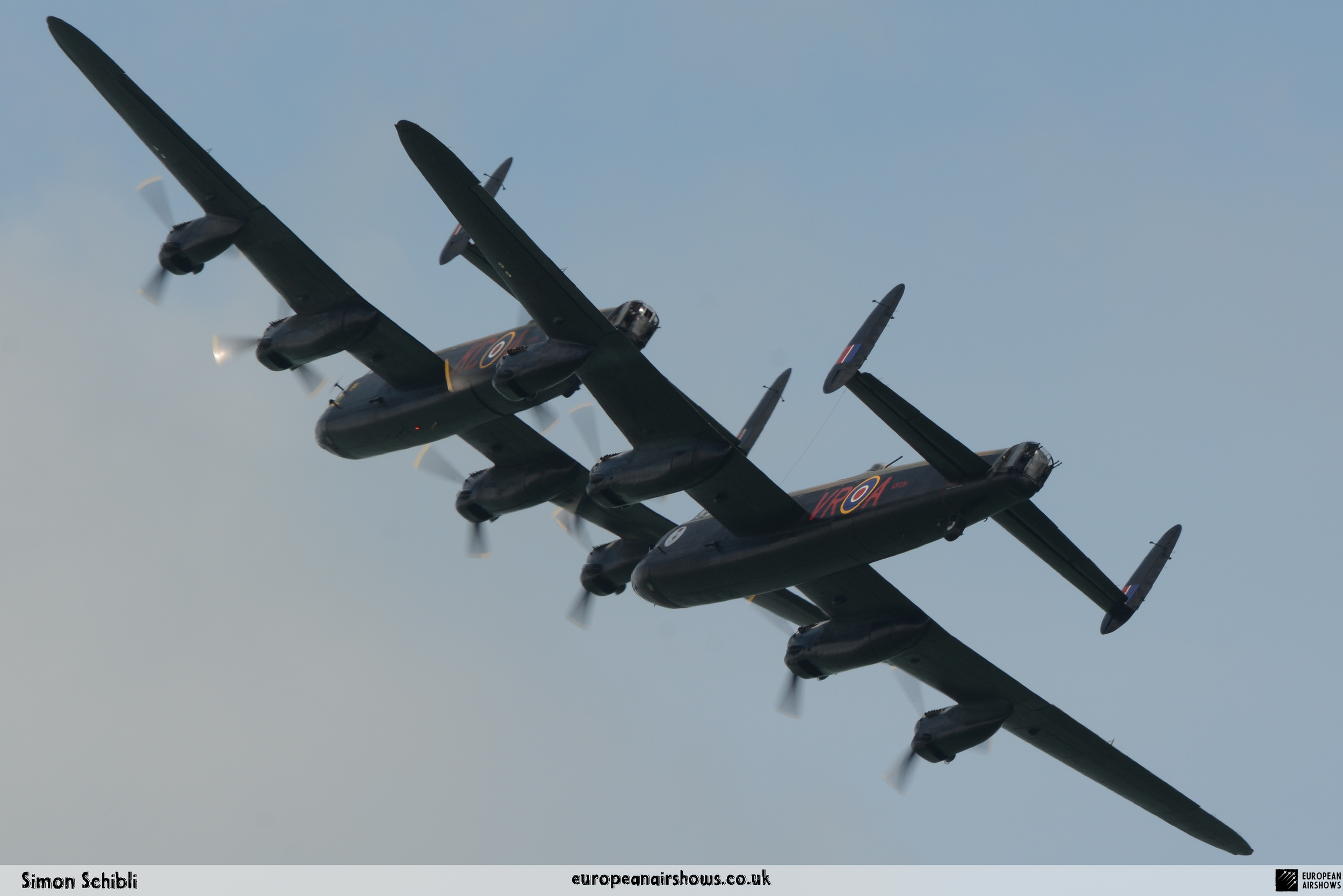
Battle of Britain Memorial Flight
About the Team
The Battle of Britain Memorial Flight (BBMF) is a distinguished unit of the Royal Air Force (RAF) dedicated to preserving and showcasing historical military aircraft that played pivotal roles during the Second World War. Based at RAF Coningsby in Lincolnshire, England, the BBMF operates a diverse fleet that includes iconic aircraft such as the Avro Lancaster heavy bomber, Supermarine Spitfires, and Hawker Hurricanes. The flight typically comprises a combination of these aircraft, which can be arranged in various formations for aerial displays, including solo performances, two-ship formations, and occasionally larger displays featuring up to seven aircraft.
In recent years, the BBMF has participated in significant commemorative events, such as the RAF100 celebrations in 2019, where they executed a memorable ‘Trenchard Plus’ formation over central London, showcasing a Dakota, Lancaster, three Spitfires, and two Hurricanes. The flight’s aircraft are often seen at various public and military events across the UK, including the prestigious Trooping the Colour ceremony, which marks the official birthday of the British monarch. The BBMF’s presence has been notable during significant occasions, such as Queen Elizabeth II’s 80th birthday in 2006 and the wedding of Prince William and Catherine Middleton in 2011.
The BBMF operates a total of eleven historic aircraft, including five Spitfires, two Hurricanes, a Lancaster, a C-47 Dakota, and two de Havilland Chipmunk training aircraft. These aircraft are flown by regular RAF aircrew, who are committed to maintaining these valuable pieces of national heritage in airworthy condition. The BBMF’s mission is twofold: to honor the memory of those who served and sacrificed their lives for the nation and to inspire future generations by promoting the modern-day Royal Air Force. The flight is administratively part of No. 1 Group (Air Combat) RAF and is funded by the Ministry of Defence, ensuring its continued operation as a ‘museum without walls.’
Team Overview
Number of Aircraft
11
Established
1957
Based
RAF Coningsby
Aircraft Type
Lancaster / Spitfire / Hurricane / C-47 / Chipmunk
About the aircraft
Lancaster Bomber: The Avro Lancaster was a British heavy bomber developed during World War II, entering service in 1942. Known for its distinctive four-engine design and impressive payload capacity, the Lancaster became the backbone of the Royal Air Force’s Bomber Command. It was particularly famous for its precision bombing raids, including the legendary Dambusters raid in 1943, which targeted German dams. The aircraft’s ability to carry large bomb loads over long distances made it a crucial asset in the Allied war effort, and it continued to serve in various roles until the early 1960s.
Spitfire: The Supermarine Spitfire is one of the most iconic fighters of World War II, renowned for its role in the Battle of Britain. Designed by R.J. Mitchell, the Spitfire featured a sleek, elliptical wing design that contributed to its exceptional speed and maneuverability. Its introduction in 1938 allowed the Royal Air Force to effectively counter the German Luftwaffe, with pilots praising its agility in dogfights. The Spitfire underwent numerous upgrades throughout the war, remaining in service until the 1950s and becoming a symbol of British resilience and engineering prowess.
Hurricane: The Hawker Hurricane was another key British fighter aircraft during World War II, known for its ruggedness and versatility. Entering service in 1937, the Hurricane was the first RAF aircraft to achieve significant success against enemy fighters. It played a vital role in the Battle of Britain, where it accounted for more enemy aircraft kills than any other British fighter. While overshadowed by the Spitfire in terms of fame, the Hurricane’s ability to withstand damage and its effectiveness in ground attack roles solidified its place in aviation history.
C-47 Dakota: The Douglas C-47 Dakota, a military variant of the DC-3, became one of the most important transport aircraft of World War II. Entering service in 1941, the C-47 was used extensively by Allied forces for troop transport, cargo delivery, and medical evacuation. Its reliability and ability to operate from short and unpaved runways made it invaluable during critical operations, including the D-Day landings and the Berlin Airlift. The Dakota’s versatility continued in peacetime, serving in various roles until the late 20th century, and it remains a beloved aircraft among aviation enthusiasts.
Chipmunk: The de Havilland Chipmunk, introduced in 1946, was a tandem two-seat training aircraft that became the primary trainer for the Royal Air Force and various civilian flying schools. Designed for ease of handling and safety, the Chipmunk featured a low-wing monoplane design and was powered by a piston engine. Its simple controls and forgiving flight characteristics made it an ideal platform for teaching new pilots the fundamentals of flying. The Chipmunk served in various roles, including aerobatic training and glider towing, and continues to be appreciated by aviation enthusiasts and flying schools around the world.
Team History
The Battle of Britain Memorial Flight (BBMF) was officially inaugurated on 11 July 1957 at RAF Biggin Hill, a site of historical significance in the context of the Battle of Britain. Initially established as the RAF Historic Aircraft Flight, the unit began its journey with a modest fleet consisting of three PR Mk XIX Spitfires and the RAF’s last airworthy Hurricane, LF363. This early formation was emblematic of the aircraft that had become symbols of British resilience during World War II. In 1969, the flight underwent a rebranding, adopting the name that it is known by today, the Battle of Britain Memorial Flight.
Throughout the years, the BBMF has evolved significantly, particularly between 1959 and 1965, when the flight maintained a reduced fleet of one Spitfire (PM631) and one Hurricane (LF363). However, as it grew in stature and capability, the BBMF expanded its collection to encompass a total of eleven historic and irreplaceable aircraft. This impressive lineup includes an Avro Lancaster, a C-47 Dakota, five Spitfires, two Hurricanes, and two de Havilland Chipmunk training aircraft, reflecting the unit’s commitment to preserving aviation history.
As a fully operational unit of the RAF, the BBMF is manned by dedicated service personnel who ensure that these aircraft remain in peak condition for public display. The motto of the BBMF, “Lest We Forget,” encapsulates the flight’s mission to honor the memory of the thousands of men and women who sacrificed their lives in the pursuit of freedom during the tumultuous years of the Second World War. This motto serves as a poignant reminder of the legacy of bravery and commitment that the BBMF seeks to commemorate through its ongoing operations and public displays.
Did You Know?
- The BBMF can perform impressive formations with up to seven aircraft, showcasing the Lancaster, Dakota, Spitfires, and Hurricanes in coordinated displays.
- The BBMF’s aircraft have graced significant events such as Queen Elizabeth II’s 80th birthday celebration and the wedding of Prince William and Catherine Middleton.
- Operating out of RAF Coningsby, the BBMF is part of No. 1 Group (Air Combat) RAF and plays a crucial role in preserving national heritage through airworthy historic aircraft.
- Established in 1957, the BBMF originally featured three PR Mk XIX Spitfires and the RAF’s last airworthy Hurricane, LF363, evolving into today’s diverse fleet of eleven historic aircraft.
- In 2019, the BBMF commemorated RAF100 by displaying seven aircraft over central London and the Royal International Air Tattoo with the memorable ‘Trenchard Plus’ formation.



























































